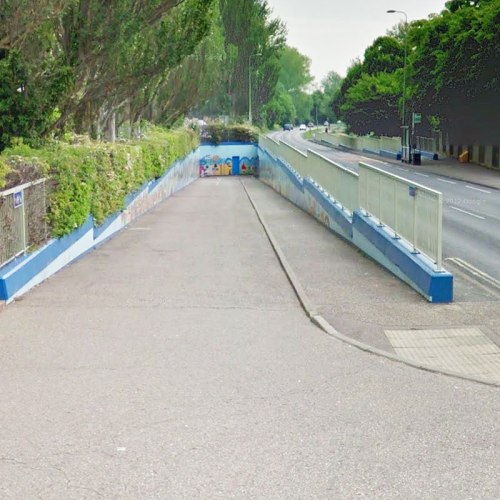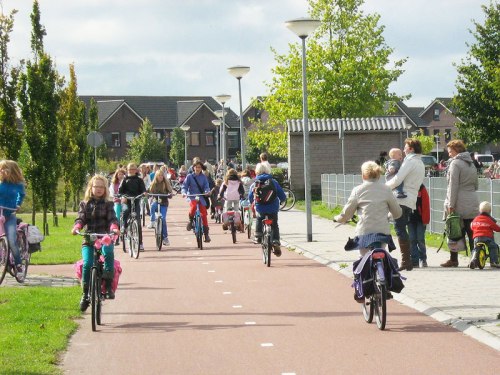It’s been a while since I had a go at the CTC on here. I was hoping that they were turning themselves around, after taking on the national Space for Cycling campaign, the headline of which is protected cycleways along main roads.
Unfortunately it seems that the CTC is like a big old container ship – it takes quite some time to turn it around. It started to turn – slightly – about a year ago, but since then I wonder if there’s been fighting at the helm or something, because it seems to have gotten stuck part-way. As far as I can see it’s just been sat there for the last six months, seemingly doing nothing much.
So I was saddened to see the CTC falling back into its old ways, cosying up to a cycling-hostile government by gratefully accepting yet another patronising pat on the head. This time, the crumb is a £1 million fee given to the CTC, who are going to spend it trying to convince people to oil their old bike, as if that’s going to make the slightest difference to the cycling rates.
I wouldn’t mind so much if the CTC was doing this off their own initiative. I wouldn’t get excited about it, but nor would I care so much. It would be another pointless exercise in futility. Meh.
But the involvement of the DfT – the actual British Government Department for Transport – stinks. The DfT shouldn’t be involved with frilly stuff like this, it should be about big infrastructure, major policy, long-term investments – and with every other form of transport, they are. They’re planning a railway so expensive that it won’t even be finished until half of my readers are dead.
But what do they do for cycling?
“Events in towns and cities, delivered in conjunction with bike re-cycle centres to present members of the public with an opportunity to:
- Fix a cycle so it can start to be used and learn how to maintain it
- Trade a cycle for one better suited to individual needs and donate surplus cycles
- Learn where best to cycle in their local area and discover local cycling activity
- Receive cycle training to increase confidence in cycling on the road”
Great. More “encouragement” – because that’s worked so well in the past, hasn’t it?
And the CTC legitimises this bullshit by putting their name to it, validating the DfT’s pathetic attempt to buy off the cycling lobby. Then again, that million quid must have been hard to resist, and Sustrans would have probably taken it if the CTC hadn’t, so you can’t really blame them I guess.
But I have doubts about any campaign organisation that accepts money from the very people their campaigning should be aimed at. It always leads to meekness, unwillingness to bite the hand that feeds it. Just look at how Sustrans changed from being a vocal campaign group into a compliant union of third-sector professionals addicted to government hand-outs.
The other annoying thing is, the DfT know that people don’t want to cycle on the roads as they are. They know that soft measures don’t work. They even admit as much in their puff-piece for this scheme:
“In 2013, 42 per cent of adults in Britain had access to a bicycle, yet 63 per cent said they had not ridden a bicycle in the past year. Despite this, 37 per cent of adults in Britain agree that many of the short journeys (less than 2 miles) that they currently make by car could just as easily be made by cycling.”
And what’s their solution? Maintenance classes and training. Whoop-de-fucking-do.
Survey after survey tells us that the main reason people don’t cycle is fear of motor traffic. All the statistics point to better infrastructure leading to increased ridership.
We don’t need more statistics and reports, we just need someone to roll them up and hit Robert Goodwill over the head with them.
And we need the CTC – and other campaign groups – to have the guts to say “no thanks, that’s just pointless busywork. Can we have decent minimum design standards and serious long-term investment instead please?”
Addendum: Somehow I missed this comment, from CTC chief Paul Tuohy, on the Road.CC article:
“The minister’s backing is a sign of the level of importance that the Department for Transport is placing on getting people back into the saddle, for which we are enormously grateful.”
On the first point I agree – the minister’s backing is a sign of the level of importance the DfT places on cycling – unfortunately Tuohy doesn’t seem to realise that the level of importance is near zero.
Secondly, “we” (I assume that’s just the CTC, he’s not speaking for all of us is he?) are “enormously grateful” for this piddling little insult/£1m sweetener. I can hear the slurping sound from here – is that chocolate on your face, Paul?











 The Alternative Department for Transport is written by, and the personal opinion of,
The Alternative Department for Transport is written by, and the personal opinion of, 


